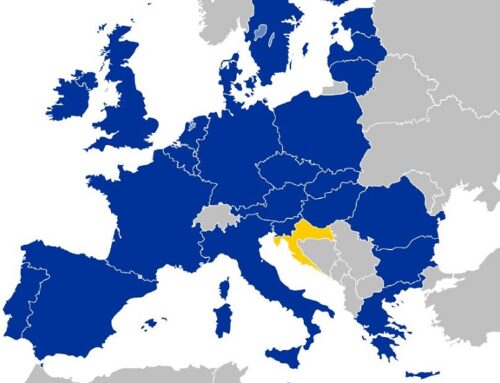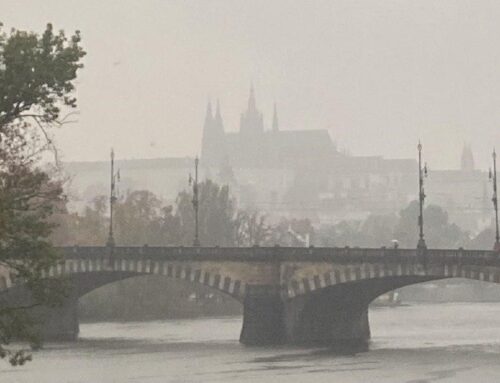Aleksandar Novković
The most recent and largest protests in Montenegro began on December 27, 2019, after the controversial law of the “Freedom of Religion or Beliefs and Legal Status of Religious Communities” (Freedom of Religion) was adopted in the National Parliament of Montenegro and signed by the incumbent President of Montenegro Milo Đukanović, who as the ‘Monarch of Montenegro’ [1] is ruling this Mediterranean country for three decades. Immediately afterwards, tens of thousands of Serbian church priests, believers and supporters took to the streets in the capital city of Podgorica and other towns in order to express their dissatisfaction with the adoption of the new law [2]. The main actor for leading the protests is The Metropolitanate of Montenegro and the Littoral (Metropolitanate) as the largest eparchy of the Serbian Orthodox Church (SPC) in Montenegro which has the legal continuity since its establishment in 1219 by Saint Sava. These protests were held each Thursday and Sunday until the Government of Montenegro on March 13, 2020 forbade any gathering in the public because of the COVID-19 pandemic. Following this decision, the Metropolitanate of SPC declared that it will respect this decision and temporary halt with protests until the pandemic is over [3].
The law of Freedom of Religion [4] itself is discriminatory towards the followers and believers of the SPC, who, according to the Census of Population, Households and Dwellings [5] conducted in 2011, comprise 72.07% of total population of Montenegro’s 620.029 citizens. The most worrisome article of the law is the Article 62 which inter alia states:
“Religious objects and land used by religious communities in the territory of Montenegro which are constructed, or obtained from the public revenue of the state or were in state ownership up to December 1, 1918, and for which there is no evidence of ownership of religious communities, as cultural heritage of Montenegro, are state property”.
Additionally:
“Religious objects built on the territory of Montenegro through joint ventures of citizens until December 1, 1918, and for which there is no evidence of ownership, as cultural heritage of Montenegro, are state property”.
In sum, the property which is questioned in this article belongs to the Metropolitanate of SPC since the state of Montenegro already made agreements in 2012 with the Catholic Church [6], the Islamic community [7] and the Jewish community [8]. Article 62 of the law is directly jeopardizing the right for the protection of property which is protected in the Article 58 of the Constitution of Montenegro [9] and in the Article 1 under the “Protocol to the Convention for the Protection of Human Rights and Fundamental Freedoms” [10] in 1952 which Montenegro ratified. Furthermore, the question that arises from the Article 62 of the law is the following: is it in fact possible to prove the legal ownership of sacral objects which were built in 13th, 14th, 15th or 16th century? The existence of the state property register was unknown in the Late Middle Ages. It is important to highlight that the year 1918 is stated in previously mentioned Article 62 because it is the year when the Podgorica Assembly of Montenegro decided to join Serbia and afterwards form the new Kingdom of Serbs, Croats and Slovenes. According to Đukanović [11], his goal is for Montenegro to have its own church which will ensure national identity in the country and block efforts of SPC to use the ideology of “Greater Serbia” to undermine Montenegro’s independence. Previously mentioned Census of Population in 2011 determined that the structure of Montenegro’s population by ethnicity consist of 44.98% Montenegrins and 28.73% Serbs, however, when it comes to mother tongue, Montenegrin speak 36.97% and Serbian speak 42.88% of Montenegro’s citizens. Main argument which Đukanović is using for promotion of “Montenegro Orthodox Church” is that the Article 40 of the Montenegro’s Constitution in 1905 claimed that Montenegro’s church is “Autocephalous” [12]. Aside the fact that at the beginning of 20th century, there were two royal families competing for power in the future unified state in both Serbia (Karađorđević) and Montenegro (Petrović), the problem with the Article 40 of 1905 Constitution is that neither did SPC nor the Mother Church in Constantinople or any other Orthodox Church recognize the autocephaly of Montenegro’s church, which is officially registered in 1993 as a non-governmental organization [13]. Furthermore, the Patriarch Bartholomew of the Patriarchate of Constantinople stated that they will never support autocephaly to the ‘Montenegrin Orthodox Church’ which is led by the priest who was excommunicated from the Church. Patriarch Bartholomew asserted that the only canonical Church in Montenegro is the Metropolitanate of SPC [14].
Lastly, according to one opinion poll [15] conducted in December 2019 in Montenegro, in terms of trust in institutions, citizens had the highest trust in the system of education and in the SPC, however the rating of Đukanović’s DPS party was the highest with 37% of decided voters. After the COVID-19 pandemic is over and protests continue, there is no doubt that the next opinion poll will show different results favoring opposition which will be crucial in order to see how it will affect this year’s parliamentary elections in Montenegro.
References:
[1] https://www.economist.com/europe/2019/04/11/why-milo-djukanovic-is-europes-most-durable-ruler
[2] https://balkaninsight.com/2020/02/17/protesters-maintain-pressure-on-montenegro-govt-over-religion-law/
[3] https://www.slobodnaevropa.org/a/30486618.html
[4] https://www.paragraf.me/nacrti_i_predlozi/predlog-zakona-o-slobodi-vjeroispovijesti-ili-uvjerenja-i-pravnom-polozaju-vjerskih-zajednica.pdf
[5] https://www.monstat.org/userfiles/file/popis2011/saopstenje/saopstenje(1).pdf (See page 15)
[6] http://www.podaci.net/_gCGO/propis/Temeljni_Ugovor_izmedju/U-ssttem01v1207-1215.html
[7] http://www.gov.me/vijesti/111246/Potpisan-Ugovor-izmedu.html
[8] http://www.predsjednik.gov.me/press-centar/izjave/111263/Potpisan-Ugovor-o-uredenju-odnosa-od-zajednickog-interesa-izmedu-Vlade-Crne-Gore-i-jevrejske-zajednice-u-Crnoj-Gori.html
[9] http://www.skupstina.me/images/dokumenti/ustav-crne-gore.pdf
[10] https://www.echr.coe.int/Documents/Convention_ENG.pdf (See page 33)
[11] http://rs.n1info.com/English/NEWS/a569428/Djukanovic-Montenegro-needs-its-own-church-for-national-identity.html
[12] http://www.montenegrina.net/pages/pages1/istorija/dokumenti/Ustav%20Crne%20Gore%20iz%201905.pdf (See page 14)
[13] https://www.bbc.com/serbian/lat/balkan-48661443
[14] https://orthochristian.com/126846.html
[15] http://www.cedem.me/component/jdownloads/send/29-politicko-javno-mnjenje/1955-politicko-javno-mnjenje-decembar-2019
Picture: https://www.facebook.com/DemokratskiFront/photos/a.946616192078058/3571569426249375/?type=3&theater





Leave A Comment